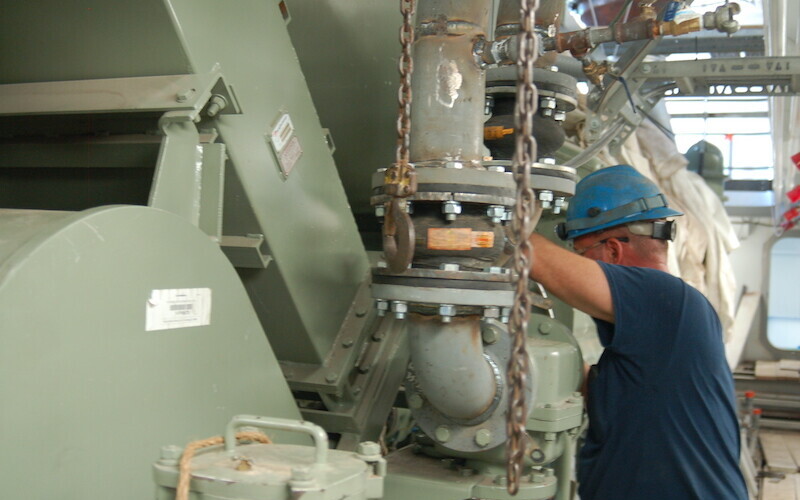A stubborn shortage of mariners to fill open positions has eased slightly from a year ago, but retention is a growing problem, as many workers retire or switch careers in a tight labor market.
Finding men and women excited to join the marine industry has been a challenge for decades, but the situation has worsened over the past few years.
There are several reasons including a major shift in the economy toward e-commerce and warehousing, fallout from the Covid-19 pandemic, a decline in the number of people in the workforce even as open jobs in maritime increase, new regulatory requirements on mariners, and a younger generation that’s less interested in a mariner’s lifestyle. There’s also growing competition for workers within the industry as the new sectors of LNG transport and offshore wind develop.
Despite offering well-paying jobs that can often reach six-figures depending on experience, the labor crunch has hit all maritime sectors from barging and towing to passenger vessels, shipyards, deep sea vessels and offshore service vessels. Some maritime training academies also report having a hard time recruiting teachers and not filling their classes with students.
“Workforce is definitely still a hot issue,” Patrick Parson, counsel and director of government affairs at the American Waterways Operators (AWO), the national association of the tug, towboat and barge industry, told WorkBoat. “In general, there has been some improvement in hiring, but I’m increasingly hearing that retaining new hires is a challenge.”
That’s been the case at tank barge operator Golding Barge Line, Vicksburg, Miss. President Austin Golding said there’s been a slight uptick in applications for open positions since the summer, and several returning employees. “It hasn’t been a drastic increase, but it has trended in the right direction,” he said. “Retention is still a struggle. The time away from home has been cited as the biggest reason for departures.”
Golding said the best solution is to provide opportunities for advancement by offering workers more responsibility and “of course, more pay. But they must come together. More pay alone won’t keep people. It especially won’t keep the people you want.”
Buckley McAllister, president of McAllister Towing in New York, said applications are up for entry-level mariners but down for more experienced positions such as captains, mates and engineers.
There’s also been an increase in shoreside jobs requiring maritime experience for offshore wind development. Because of the strong interest by maritime companies to hire for both shoreside and vessel positions, some maritime schools are organizing two separate career fairs focusing on maritime and non-maritime jobs, said McAllister, whose company operates more than 60 tugboats along the East Coast.
To attract applicants, maritime companies have gotten creative, offering signing bonuses, reaching far beyond their geographic locations to find workers, partnering with maritime academies and community colleges, attending job fairs, advertising on various social media platforms, offering more attractive benefits and pay, and tweaking work schedules.
Maritime academies and community colleges that offer maritime programs have become an increasing focus for recruiting efforts as these schools graduate mariners with training and licenses that make them ready to quickly start work.
But, Parsons said, “just as our members are working hard to recruit to fill open mariner positions, those schools are also struggling to fill seats in their training programs.”
He said there are many opportunities for the schools and the industry to work together to encourage high school students to join training programs, especially those that create a pathway into the tug and barge industry.
He cited the tug and barge licensing program at Maine Maritime Academy, one of the few such specialized programs teaching these specific workboat skills. To grow the number of qualified candidates for work in the inland industry, more schools need to offer similar license tracks and vessel experience relevant to tugboats, towboats and barges. “Right now, that’s pretty limited with Maine Maritime Academy as the standout.”
At an online workforce forum organized by AWO in October, Maine Maritime officials outlined their workboat program, which offers a range of credential-track pathways and professional development courses for the workboat industry that also includes continuing education for current mariners.
Tim Leach, assistant professor of maritime transportation, said the school wants to partner with companies that will offer a minimum of 60-day hands-on internships that help fulfil the school’s requirements for sea time.
He suggests that companies pay students a day rate for their work experience. “It helps develop loyalty to that company,” Leach told the forum. “I’ve watched this over the years, and often a company might not get that student immediately after graduation, but the student might end up back at the company later and with even more experience.”
He also encourages company representatives to come ride on training boats with academy students, attend career fairs, serve as guest speakers in class or remotely, and steer people who are interested in attending a maritime academy to apply for admission.
Timothy Achorn, director, Center for Professional Mariner Development, added that experienced mariners are needed to teach at Maine Maritime. “We’re always looking for instructors,” he said, especially deck instructors. “Don’t be afraid to teach. I never thought I’d do it, and I’ve been doing it now for 23 years.”





